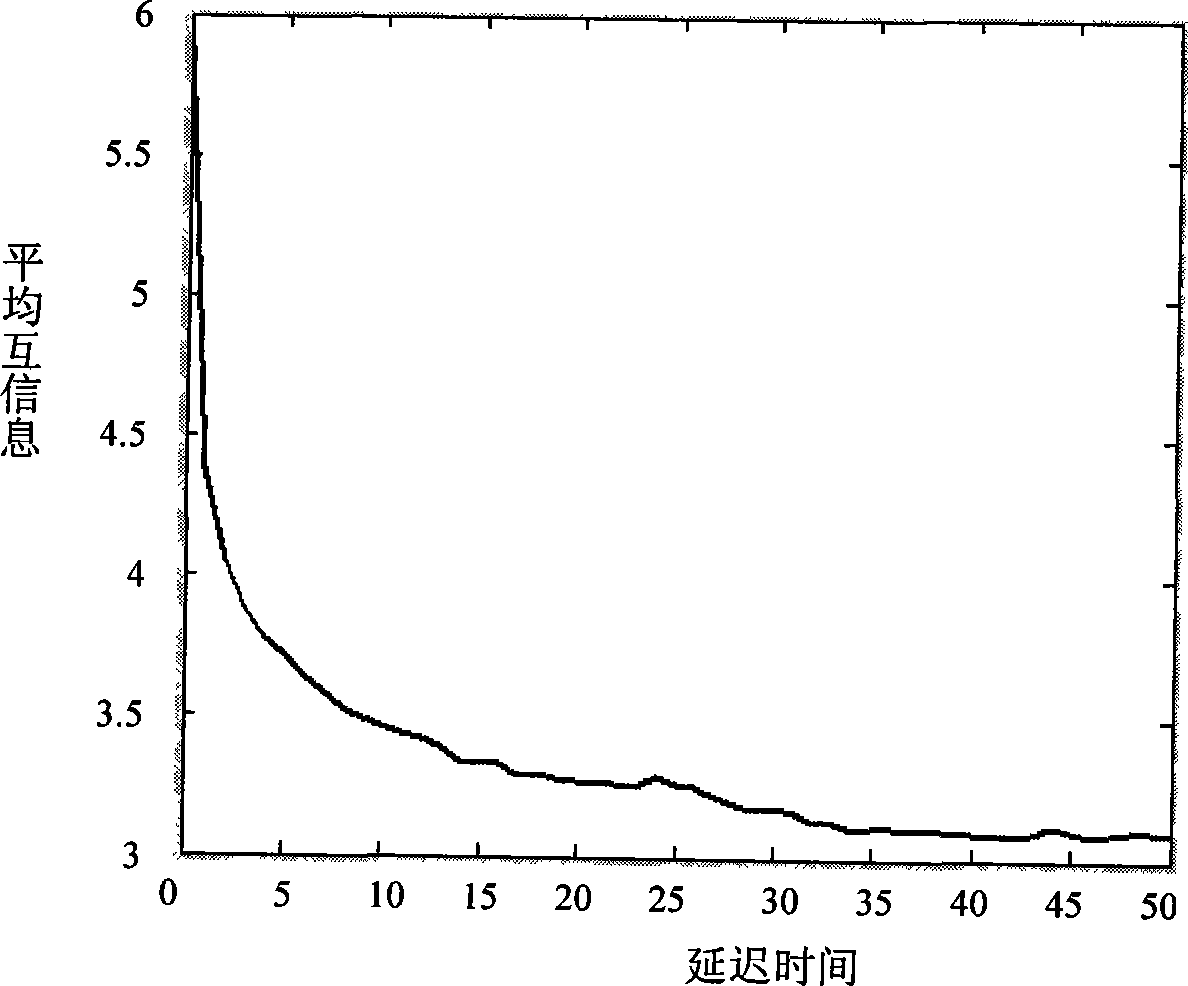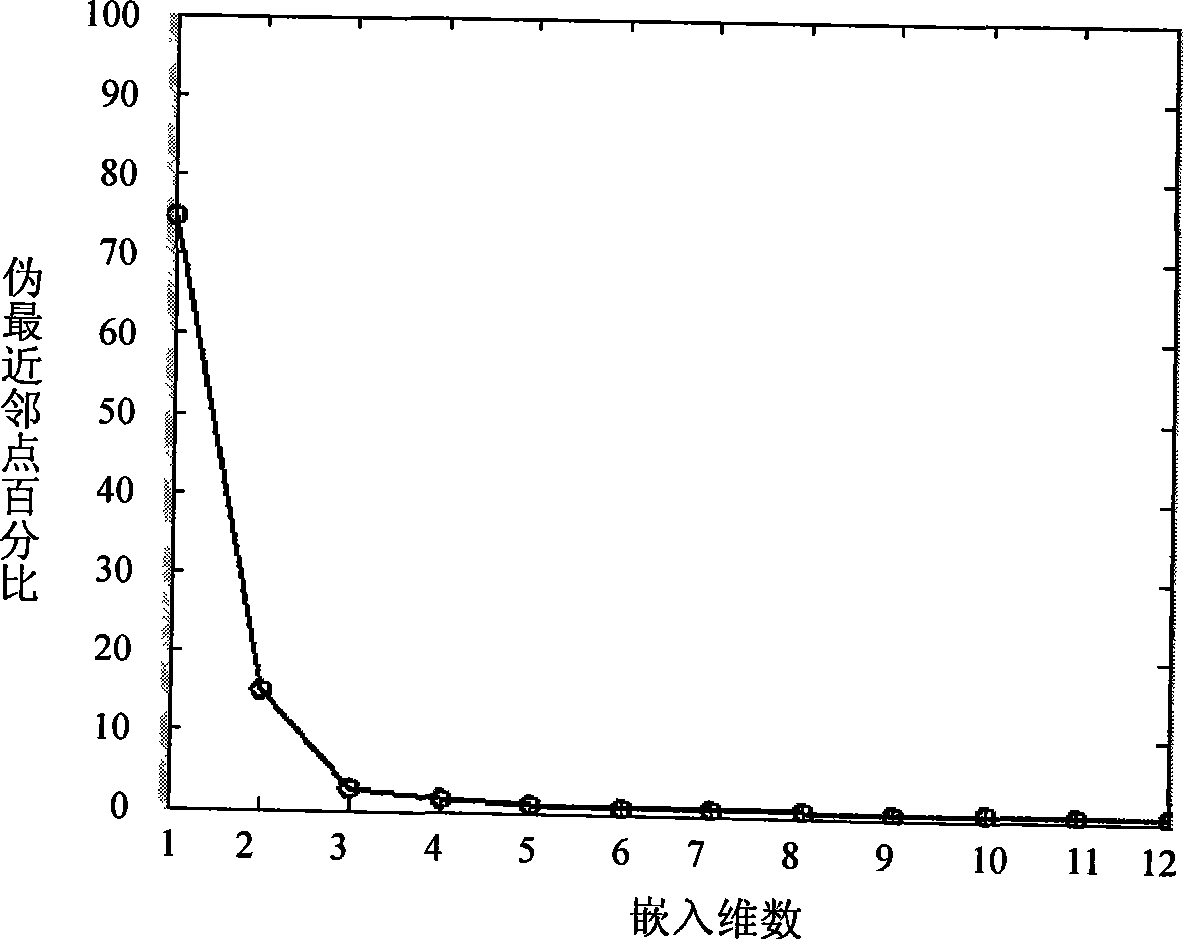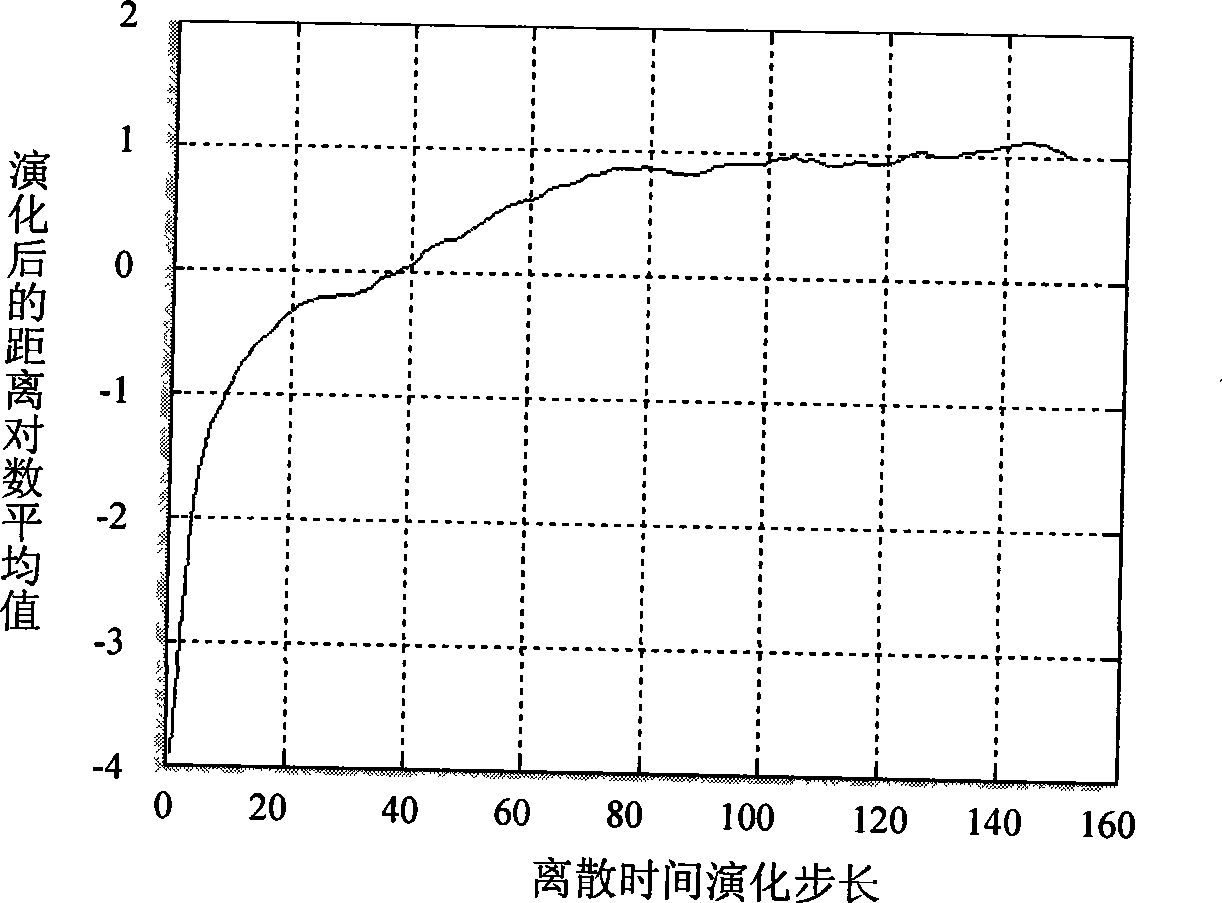Heat supply load interval prediction method based on chaos theory
A technology of chaos theory and load interval, applied in the direction of chaos model, nonlinear system model, etc., can solve the problems that cannot meet the requirements of load forecast reliability, lack of internal regularity description of heat load, etc.
- Summary
- Abstract
- Description
- Claims
- Application Information
AI Technical Summary
Problems solved by technology
Method used
Image
Examples
specific Embodiment approach 1
[0048] Specific implementation mode one: based on the heating load interval forecasting method based on chaos theory, the forecasting method is completed by the following steps: Step 1, the state space reconstruction of the heating load time series: (a) select the embedding of the heating load time series dimension, (b) calculate the delay time of the heating load time series, (c) reconstruct the phase space according to the obtained delay time and embedding dimension; step 2, chaotic identification with the largest Lyapunov exponent: (a) find the reconstructed phase space the nearest neighbors of each point in phase space, and limit the short-term separation of the point from its nearest neighbors, (b) calculate the distance after all discrete time steps of its nearest neighbors for each point in phase space, (c) Calculate the average distance according to the distance from each point to each discrete time step corresponding to this point, (d) make a regression line according ...
specific Embodiment approach 2
[0049] Embodiment two: the difference between this embodiment and embodiment one is: it also includes step 4, adopting the relative error method and the root mean square relative error method to evaluate the Lyapunov index point forecast, and using the interval reliability to evaluate the method's To evaluate the reliability of the forecast interval.
[0050] principle:
[0051] 1. Maximum forecast time scale
[0052] According to the chaotic system theory, if the maximum Lyapunov exponent λ of the time series 1 max , which has with the largest Lyapunov exponent T max = 1 λ 1 established, the maximum Lyapunov exponent interval can be obtained by the prediction algorithm of the maximum Lyapunov exponent interval Therefore, the maximum forecast time scale T max becomes 1 λ 1 m...
specific Embodiment approach 3
[0061] Embodiment 3: The difference between this embodiment and Embodiment 2 is that the method for selecting the embedding dimension of the heating load time series in step 1 (a) is the pseudo-neighborhood method.
PUM
 Login to View More
Login to View More Abstract
Description
Claims
Application Information
 Login to View More
Login to View More - R&D
- Intellectual Property
- Life Sciences
- Materials
- Tech Scout
- Unparalleled Data Quality
- Higher Quality Content
- 60% Fewer Hallucinations
Browse by: Latest US Patents, China's latest patents, Technical Efficacy Thesaurus, Application Domain, Technology Topic, Popular Technical Reports.
© 2025 PatSnap. All rights reserved.Legal|Privacy policy|Modern Slavery Act Transparency Statement|Sitemap|About US| Contact US: help@patsnap.com



